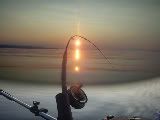I gotta say, I don't think a handful of guys fishing halibut on the inside is going to make any difference at all. Halibut are migratory and there is A LOT of deep water for them to hide in.
Its not like a cod where the fish has lived its entire life on one rock pile. That fish you catch of nanaimo could have came down from the port hardy for all we know. If I was going to fish em, I'd be on anchor on some rock pile close to where it drops off to 1000' feet in the straight and I wouldn't feel bad about bonking one at all.
For the females it used to be 100lbs+ was female, then 80lbs was the magic number, then 70, then 50 now 40lbs? Come on guys they aren't ALL females ya know. In norway they have recorded male halibut to over 170lbs.
The point being is, yes larger fish tend to have a greater chance of being female, but lets not treat them like they are rare and can't be harvested. Sportsfishermen take a tiny percentage of the total biomass of halibut - don't let anybody guilt you into not targeting them.
I've been lucky enough to tag into maybe a half dozen or so over 100lbs - been there done that, the meat is chewy and I'll doubt I'll take another one that big. But if someone else wants a trophy go for it, it isn't going to make one bit of difference to their abundance.
Everybody wants to say release big halibut, but chinook are crashing in some of our rivers and I don't hear anybody promoting releasing mature springs?
http://www.fishingvancouverisland.org - Win an 8-Hour WCVI Charter!



